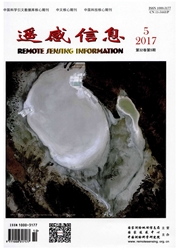

 中文摘要:
中文摘要:
多重表达是地理信息弹性存取和集成分析的一个内在要求,它实质上提供了一个多尺度、多应用主题的信息集成机制。多重表达的概念建模需要在高度抽象的地理概念层次上实现地理信息一体化的弹性表达,而不是局限于数据库中几何多样性的一致性描述。基于本体的地理信息建模更贴近于认知模型,还有助于模型语义的表达以及基于语义的信息集成和共享。论文探讨了基于本体的地理概念表达与GIS语义的形式化,并通过多重表达上下文的抽象以及本体逻辑基础的上下文扩展,给出一个支持GIS多重表达的本体语义模型,该模型能够为多重表达数据库的实现提供一个易于理解和共享的形式化基础。
 英文摘要:
英文摘要:
An ontology-based semantic model was presented to support multiple representation, which virtually implies a capability to model and access the geographic information flexibly under different resolutions or different viewpoints. As an explicit specification of conceptualization, ontology is adept in semantic expression and plays a key role in semantic-based information sharing and integration. It is promising to extract the intuitive geographic concepts based on ontology and then to construct a conceptual data model closer to geographic reality. In order to formalize the varying semantics as well as geometry multiplicity due to different viewpoints or levels of abstraction, the context was advanced and contextual extension was made accordingly to classical Description Logics (DL). With the contextual extension, the semantic model proposed is capable of modeling multiple representation at the level of ontological concepts, instead of the level of geometry. It can provide a logic-based formal foundation for the design of multi-representation database.
 同期刊论文项目
同期刊论文项目
 同项目期刊论文
同项目期刊论文
 期刊信息
期刊信息
